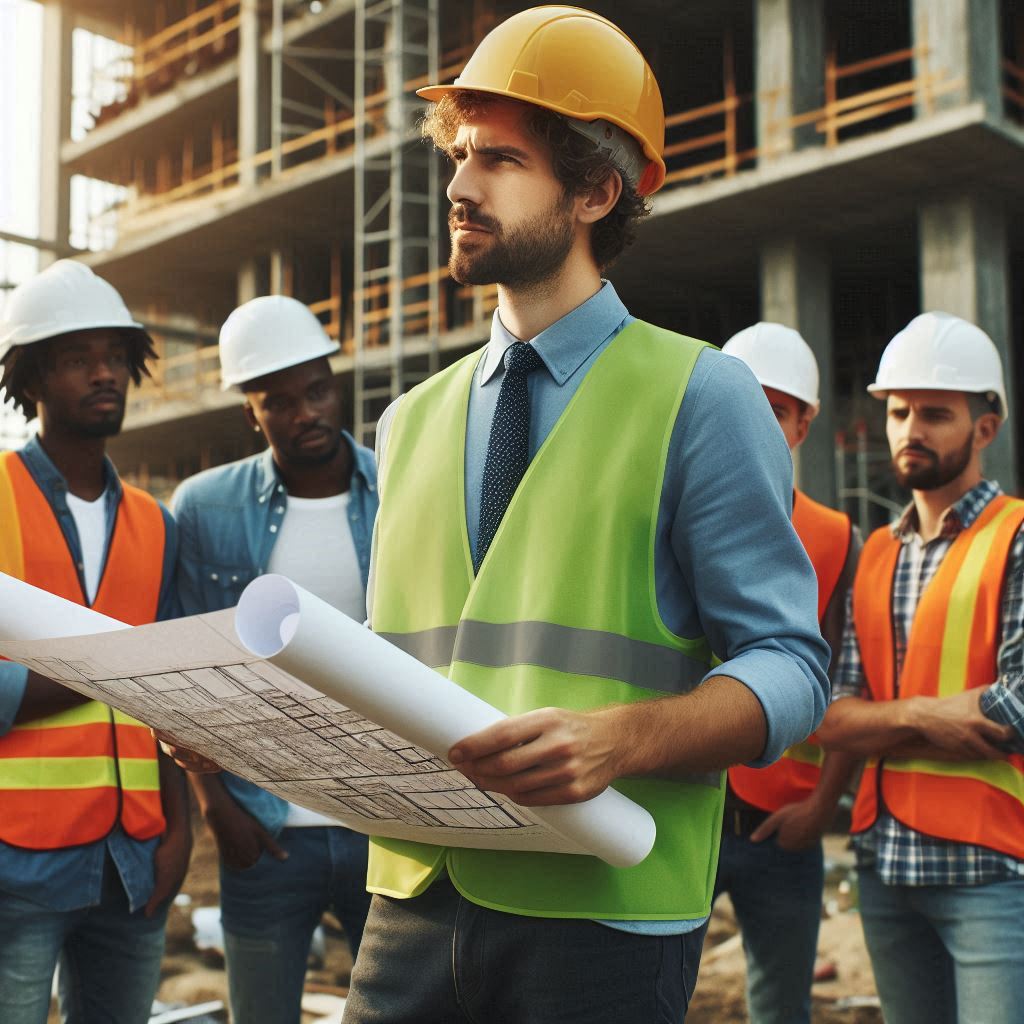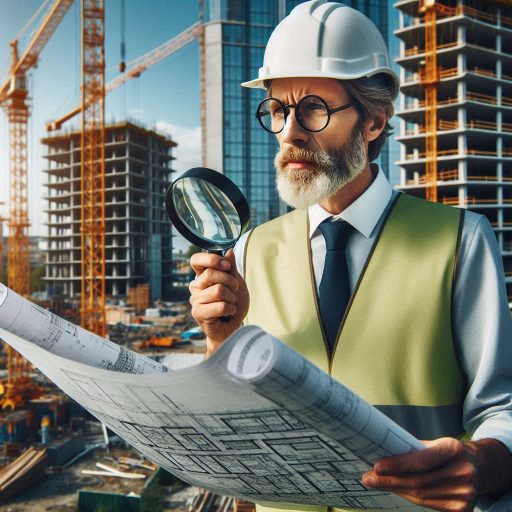Introduction
Digital tools and software play a crucial role in the field of landscape architecture by enhancing productivity and efficiency.
The growth of technology has revolutionized the way landscape architects plan and design outdoor spaces.
These tools allow professionals to create 3D models, analyze topography, and visualize project concepts in a virtual environment.
This level of detail and precision helps in communicating ideas effectively to clients and stakeholders.
With advanced software, landscape architects can streamline documentation, collaborate with team members in real-time, and produce accurate cost estimates.
These tools enable professionals to integrate sustainable design elements and ensure ecological sensitivity in their projects.
The incorporation of digital tools has also improved project management by providing better organization of tasks, timelines, and resources.
This leads to more efficient project delivery and client satisfaction.
Digital tools and software elevate landscape architecture.
They empower professionals to design innovative and sustainable outdoor environments.
These environments enrich communities and promote environmental stewardship.
Mapping and GIS Software
Popular mapping and GIS software used by landscape architects
In today‘s data-driven world, mapping and Geographic Information System (GIS) software have become indispensable tools for landscape architects.
These software solutions provide essential functionalities for spatial data analysis, visualization, and project management.
Here‘s a closer look at some of the most popular mapping and GIS software currently available:
AutoCAD Map 3D
AutoCAD Map 3D is a powerful mapping solution that seamlessly integrates CAD capabilities with GIS data.
This software allows landscape architects to create, manage, and analyze spatial data efficiently.
With its extensive features, users can develop detailed topographical maps, integrate various data formats, and manage large datasets.
ArcGIS
ArcGIS is one of the most widely used GIS platforms in the industry, known for its comprehensive features that cater to mapping, analysis, and data visualization.
This software provides a suite of tools that empower landscape architects to conduct in-depth spatial analysis and modeling.
Users can easily create detailed maps, perform spatial queries, and analyze geographic patterns.
QGIS
QGIS is an open-source GIS software that offers a broad range of features for creating detailed maps and conducting spatial analysis.
It is highly customizable and supports a variety of data formats, making it accessible for users with different needs and budgets.
How this software helps with site analysis, planning, and project visualization
Mapping and GIS software significantly enhance the ability of landscape architects to conduct detailed site analyses.
These tools allow professionals to assess various site attributes, including topography, soil types, vegetation, and existing infrastructure.
By overlaying multiple layers of information, designers gain a comprehensive understanding of the site‘s constraints and opportunities.
For instance, analyzing topographic data helps architects identify drainage patterns and slope stability, which are crucial for sustainable design.
Soil analysis enables them to select appropriate plant species and determine necessary soil amendments.
Understanding vegetation distribution can inform conservation efforts and biodiversity enhancement strategies.
Application in Planning and Project Visualization
The planning phase of landscape architecture benefits immensely from the integration of mapping and GIS software.
These tools facilitate the creation of accurate site plans, conduct feasibility studies, and visualize design concepts effectively.
Using GIS data, landscape architects create realistic 3D models and simulations.
This approach helps clients and stakeholders visualize the project before implementation.
For example, landscape architects can use these models to showcase how a proposed design will integrate with the existing landscape.
This not only aids in client presentations but also helps in obtaining necessary permits by providing visual evidence of the project‘s impact.
How mapping and GIS software can enhance design process and efficiency
Mapping and GIS software streamline the design process by providing access to accurate and up-to-date data.
This reliability reduces the potential for errors and enhances decision-making capabilities.
Landscape architects analyze spatial relationships and patterns.
This analysis leads to sustainable and functional designs.
Their designs respond effectively to the site‘s unique characteristics.
These tools promote collaboration among team members.
They enhance communication and integration across multiple disciplines in the design process.
A shared platform allows landscape architects, engineers, and planners to collaborate efficiently.
This collaboration ensures alignment and coordination across all project aspects.
Mapping and GIS software are essential tools for landscape architects, enabling them to analyze sites more effectively, plan with precision, and visualize projects accurately.
By incorporating these technologies into their workflow, professionals enhance their designs and improve project outcomes.
This approach ultimately contributes to more sustainable and resilient landscapes.
Read: Essential Skills for Aspiring Costume Designers
3D Modeling and Rendering Software
3D modeling and rendering software play a crucial role in landscape architecture.
These tools help landscape architects create detailed visualizations of their designs.
They enable professionals to transform concepts into realistic representations, enhancing communication with clients and stakeholders.
Here are some common 3D modeling and rendering software options used in the field:
3D modeling and rendering software commonly used in landscape architecture
- SketchUp: Known for its user-friendly interface, SketchUp allows quick modeling of landscapes and structures.
- AutoCAD: This software is essential for creating detailed plans and 3D models with precision.
- Rhino: Rhino offers advanced modeling capabilities, perfect for complex landscape designs.
- Lumion: This tool excels in rendering realistic landscapes and environments quickly.
- Twinmotion: With its intuitive interface, Twinmotion helps users create immersive visualizations in real time.
Benefits of creating realistic visualizations for clients and stakeholders
Creating realistic visualizations offers numerous advantages for landscape architects.
Here are some key benefits:
- Enhanced Communication: Visualizations bridge the gap between technical language and client understanding.
They help convey design intent clearly. - Improved Client Engagement: Clients feel more involved when they can visualize the proposed designs.
This engagement fosters trust and collaboration. - Better Decision-Making: Realistic renderings allow clients and stakeholders to assess designs more effectively.
They can make informed decisions based on visual data. - Increased Project Approval Rates: When clients see accurate representations of designs, they are more likely to approve projects.
Visualizations can help avoid misunderstandings that lead to project delays. - Streamlined Revisions: Accurate visualizations make it easier to identify design flaws early.
This streamlines the revision process, saving time and resources.
Importance of accurate representations of landscape designs for presenting ideas
Accurate representations of landscape designs are vital for several reasons:
- Clear Presentation of Ideas: Accurate visuals help communicate design concepts effectively.
This clarity aids in ensuring all parties share the same vision. - Realistic Expectations: When clients see lifelike representations, they form realistic expectations of the final project.
This alignment prevents potential disappointments during implementation. - Effective Marketing Tools: High-quality visualizations serve as powerful marketing tools.
They attract potential clients and showcase a landscape architect’s skills and creativity. - Design Validation: Accurate models allow landscape architects to validate their designs against real-world conditions.
This ensures that the proposed solutions are feasible and effective.
3D modeling and rendering software are essential tools for landscape architects.
They facilitate the creation of realistic visualizations, improving communication and decision-making.
Accurate representations ensure clients and stakeholders clearly understand design intent, leading to successful project outcomes.
Embracing these digital tools enhances the overall landscape architecture process.
Read: Building a Portfolio for Costume Design
Plant Databases and Design Software
Importance of plant databases and design software for landscape architects
In the realm of landscape architecture, plant databases and design software play a vital role in streamlining the design process and enhancing the quality of plant selections.
These tools are not merely accessories but foundational elements that facilitate efficient planning, effective maintenance, and innovative design.
Here‘s a closer look at their significance:
Facilitates Plant Selection with Detailed Information
Plant databases provide comprehensive details about various plant species, including growth habits, climate preferences, soil requirements, and visual characteristics.
This wealth of information empowers landscape architects to make informed decisions that align with project goals.
- Species Diversity: These databases provide architects with a wide array of species.
Architects can explore various options tailored to specific environments or design themes. - Informed Choices: Detailed descriptions help architects select plants that thrive in specific conditions.
These plants also enhance the landscape’s aesthetic vision.
Assists in Planning and Visualizing Plant Placement
Design software serves as a powerful visualization tool, enabling architects to plan and simulate plant placements before actual implementation.
- Spatial Awareness: Architects can visualize how plants will interact with existing structures, pathways, and other landscape features.
This spatial understanding helps avoid costly mistakes during installation. - Interactive Design:Many design software options let architects make real-time adjustments. This helps them experiment with different layouts and combinations.
They can achieve their desired look and feel more effectively.
Provides Guidelines for Plant Maintenance and Care
Beyond initial design, these tools often include resources on ongoing plant maintenance.
- Maintenance Protocols: Architects can ensure the longevity and health of selected plants by providing guidelines on watering schedules.
They should also outline fertilization and pest management strategies. - Sustainability Focus: Many databases emphasize sustainable practices.
They promote plant selections that require less water and resist pests.
These choices contribute to environmentally friendly landscapes.
How this software helps with plant selection, placement, and maintenance
The integration of plant databases and design software significantly enhances the selection process through various mechanisms:
Transform Your Career Today
Unlock a personalized career strategy that drives real results. Get tailored advice and a roadmap designed just for you.
Start Now- Comprehensive Information: These resources offer detailed information on a multitude of plant species, allowing architects to evaluate their options thoroughly.
- Comparative Analysis: Architects can compare plants by assessing criteria like drought resistance, height, color, and bloom time.
This process ensures selections align with environmental conditions and aesthetic goals. - Client-Centric Choices:These tools enable architects to incorporate client preferences.
They foster a collaborative design process that addresses specific needs and desires.
Examples of popular plant databases and design software available to landscape architects
Several plant databases and design software options are essential for landscape architects:
- FloraBase: This comprehensive plant database specializes in native species, offering extensive information that supports biodiversity in design projects.
Its focus on native plants helps architects create landscapes that are not only visually appealing but also ecologically sustainable. - AutoCAD: Known for its robust design capabilities, AutoCAD allows architects to create detailed landscape plans.
This software enables precise measurements and layouts, essential for effective project execution. - Land F/X: Designed specifically for landscape architects, Land F/X aids in plant selection and placement.
It includes features tailored to landscape design, making it easier for architects to incorporate planting plans into their overall design workflows.
These examples illustrate how plant databases and design software are indispensable tools for landscape architects.
They enhance the design process by providing essential information, facilitating plant selection, and improving overall project outcomes.
As landscape architecture evolves, professionals must integrate technology and botanical knowledge.
This integration is crucial for creating sustainable, beautiful, and functional landscapes.
Read: Networking Events for Costume Designers

Project Management and Collaboration Tools
Overview of project management and collaboration tools that landscape architects can use to streamline workflow
Landscape architects can significantly benefit from project management and collaboration tools.
These tools streamline workflow, enhance communication, and improve overall project efficiency.
By integrating these tools into their processes, architects can effectively manage tasks and deadlines.
They can also coordinate efforts with team members and stakeholders more easily.
Tools like Asana, Trello, and Basecamp are popular among landscape architects.
They allow teams to assign tasks, set deadlines, and track progress in real-time.
These platforms also support document sharing and collaboration.
By using them, architects can create a centralized space for project-related information.
This centralization improves accessibility and ensures everyone stays informed.
Benefits of using these tools for communication, file sharing, and task management
Using project management tools offers multiple benefits for landscape architects.
First, they enhance communication among team members.
Clear and consistent communication reduces the chances of misunderstandings.
When everyone accesses the same information, collaboration becomes more effective.
Second, these tools improve file sharing.
Architects often work with large files, including plans and renderings.
Project management software allows teams to upload and share files easily.
This capability ensures that everyone has the latest versions of documents.
It also reduces the risk of losing critical information during the project.
Third, task management becomes simpler with these tools.
Architects can break down projects into manageable tasks.
Team members can update their progress, set priorities, and mark tasks as complete.
This visibility helps managers identify bottlenecks and allocate resources efficiently.
When team members know their responsibilities, productivity increases.
Examples of software that allow for efficient collaboration among team members
Several software options facilitate efficient collaboration among landscape architects.
Asana stands out for its user-friendly interface.
It allows teams to create projects, assign tasks, and set deadlines effortlessly.
Trello employs a visual board system, making it easy to track project status at a glance.
Basecamp offers a comprehensive solution for project management.
It combines to-do lists, file sharing, and messaging in one platform.
This integration helps teams stay organized and focused on their goals.
Additionally, Slack enhances communication through real-time messaging and channels for specific projects.
Project management and collaboration tools are essential for landscape architects.
They streamline workflow, enhance communication, and improve file sharing.
By leveraging tools like Asana, Trello, and Basecamp, architects can manage tasks more efficiently.
These tools empower teams to collaborate effectively, resulting in successful project outcomes.
Embracing technology in project management ultimately enhances productivity and fosters a collaborative work environment.
Read: Freelance vs. In-House Costume Design Jobs
Drone Technology
Drone technology has revolutionized landscape architecture by enhancing project efficiency and accuracy.
Landscape architects increasingly use drones for various applications.
Here‘s a closer look at how drones are utilized and their benefits.
How drone technology is being utilized in landscape architecture projects
Drones provide valuable data and insights for landscape architecture projects.
Here are key applications of drone technology in this field:
- Site Surveys: Drones quickly capture detailed topographical data.
They create accurate 3D models of landscapes. - Aerial Photography: Drones offer high-resolution aerial images.
These images showcase the project site from unique perspectives. - Project Monitoring: Drones facilitate ongoing project evaluations.
They help landscape architects track progress and assess changes in real-time.
Benefits of using drones for site surveys, aerial photography, and project monitoring
Utilizing drones in landscape architecture offers several advantages:
- Increased Efficiency: Drones significantly reduce the time needed for site surveys.
Traditional methods may take days or weeks, while drones complete tasks in hours. - Enhanced Accuracy: Drones capture precise measurements and data.
This precision minimizes errors in planning and execution. - Cost Savings: Using drones lowers labor and equipment costs.
Architects can accomplish more with fewer resources. - Improved Data Collection: Drones gather extensive data quickly.
This data aids in informed decision-making throughout the project lifecycle. - Safer Operations: Drones perform tasks in hazardous or hard-to-reach areas.
This capability reduces risks to workers.
How drone technology has improved efficiency and accuracy in landscape design
Several projects highlight the impact of drone technology on landscape architecture:
- Urban Park Development: A city used drones to survey land for a new park.
They obtained accurate topographical maps in just hours, expediting the design process. - Campus Planning: A university employed drones to monitor landscaping changes over time.
They tracked vegetation growth and project progress with remarkable accuracy. - Environmental Restoration: Landscape architects utilized drones to assess the impact of restoration projects.
They gathered aerial imagery to evaluate ecological health and made data-driven adjustments. - Residential Projects: Drones assisted architects in designing residential landscapes.
They captured high-quality images, allowing clients to visualize designs effectively. - Site Analysis for Green Spaces: A landscape firm used drones to analyze potential green spaces in urban areas.
This analysis informed sustainable design decisions and improved community engagement.
Drone technology continues to transform landscape architecture.
By providing accurate data and enhancing efficiency, drones play a crucial role in modern design practices.
As landscape architects embrace this technology, they unlock new possibilities for creativity and innovation in their projects.
Read: Historic Costume Design Inspirations
Virtual Reality and Augmented Reality Tools
Virtual Reality (VR) and Augmented Reality (AR) tools are revolutionizing landscape architecture.
These technologies enhance visualization and presentation, offering immersive experiences for clients.
Here‘s how VR and AR are changing the game for landscape architects.
How virtual reality and augmented reality tools are changing the way landscape architects visualize and present designs
- Enhanced Design Presentation: VR and AR allow landscape architects to create immersive 3D models of their designs.
Clients can walk through these virtual spaces, gaining a clear understanding of the project. - Real-Time Modifications: Designers can make changes to their projects instantly.
Clients see how these modifications affect the overall design, fostering collaboration and informed decision-making. - Improved Spatial Understanding: These tools help clients visualize scale and proportion.
Users can experience a project‘s layout as if they were physically present.
Benefits of immersing clients in a virtual environment to experience the design before implementation
- Engagement: Immersive experiences keep clients engaged and invested in the design process.
They can interact with elements and explore various options before finalizing the design. - Elimination of Miscommunication: VR and AR reduce misunderstandings.
Clients can better grasp design intentions, leading to fewer revisions and smoother project execution. - Confidence in Design Choices: Experiencing a design in a virtual environment builds trust.
Clients feel more confident in their choices, knowing they have seen the design in action.
How VR and AR technology have been successfully integrated into landscape architecture projects
Many landscape architecture firms have successfully integrated VR and AR into their projects.
Here are a few examples:
- National Gallery of Canada: This project used AR to visualize a proposed landscape redesign.
Visitors could see how the new design would enhance their experience in real-time. - Tampa Bay’s Riverwalk: VR simulations allowed stakeholders to experience the Riverwalk before its construction.
The immersive experience helped secure funding and community support. - Urban Planning Projects: Various cities have employed VR tools to engage residents in urban planning discussions.
Citizens can explore proposed changes and offer feedback through interactive virtual environments.
Virtual and augmented reality tools are transforming landscape architecture.
They enhance design visualization, engage clients, and foster collaboration.
By integrating these technologies, landscape architects can deliver more effective presentations and designs.
As VR and AR continue to evolve, they will play an even greater role in shaping the future of landscape architecture.
Delve into the Subject: Educational Resources for Exhibition Designers
Sustainability and Environmental Impact Software
Sustainability remains a core principle in landscape architecture.
Landscape architects strive to create designs that positively impact the environment.
Software tools specifically designed for sustainability analysis help architects achieve these goals.
These tools enable professionals to assess and mitigate the environmental impact of their projects effectively.
Software tools that help landscape architects analyze and mitigate the environmental impact of their designs
Several software applications assist landscape architects in analyzing their designs’ environmental effects.
Programs like AutoCAD, ArcGIS, and SketchUp allow architects to visualize potential impacts on the surrounding environment.
These tools help assess factors such as soil quality, water runoff, and local biodiversity.
By understanding these variables, architects can make informed decisions that promote sustainability.
Showcase Your Business Today
Reach thousands of readers actively exploring professional services. Publish your business profile and grow your audience now.
Publish NowImportance of sustainability in landscape architecture and the role of software in achieving sustainable outcomes
Sustainability is crucial for landscape architecture.
It enhances ecological health and contributes to social and economic well-being.
By focusing on sustainable practices, architects can create environments that thrive over time.
Software tools play a vital role in achieving these sustainable outcomes.
They enable architects to simulate various scenarios and evaluate the long-term impacts of their designs.
How software can help optimize water usage, energy efficiency, and green practices in landscape design
One of the significant challenges in landscape design is optimizing water usage.
Software like Hydrology and WaterCAD allows architects to analyze water flow and irrigation needs.
These tools help identify areas that require less irrigation and suggest efficient watering methods.
By using these insights, architects can design landscapes that conserve water and promote healthier ecosystems.
Improving Energy Efficiency
Energy efficiency also plays a critical role in sustainable landscape architecture.
Software tools can model energy consumption and analyze how landscapes interact with their environments.
For example, energy modeling tools assess how sunlight and wind patterns affect energy use.
Architects can design shaded areas or windbreaks to reduce energy consumption in surrounding buildings.
Supporting Green Practices
Many software solutions support green practices in landscape design.
Tools like LandscapeMetrics and SITES help architects implement sustainable practices effectively.
These programs provide guidelines for selecting native plants, reducing chemical use, and enhancing biodiversity.
By following these guidelines, architects can create environments that support local ecosystems.
Sustainability and environmental impact software play a vital role in landscape architecture.
These tools help architects analyze and mitigate the environmental impacts of their designs.
By focusing on sustainability, architects can create landscapes that benefit both people and the environment.
Utilizing software tools to optimize water usage, improve energy efficiency, and support green practices is essential for achieving sustainable outcomes.
Embracing these digital tools fosters a healthier planet for future generations.
Conclusion
Digital tools and software significantly enhance the work of landscape architects.
These technologies streamline design processes, improve collaboration, and increase efficiency across various projects.
With advanced features, they allow professionals to create detailed plans and stunning visualizations that bring concepts to life.
Furthermore, software solutions enable better project management, ensuring resources are allocated effectively and timelines are adhered to.
The significance of adopting digital tools cannot be overstated.
They empower landscape architects to stay competitive in a rapidly evolving industry.
Embracing technology fosters innovation and creativity in design, allowing professionals to tackle complex projects with ease.
Moreover, these tools facilitate better communication with clients and stakeholders, ensuring that everyone is on the same page.
I encourage landscape architects to explore the wide array of software options available today.
By integrating these tools into their workflows, they can elevate their projects and improve client satisfaction.
Staying informed about technological advancements is crucial for future success.
As the industry continues to evolve, being proactive in adopting new technologies will set professionals apart and position them as leaders in landscape architecture.
[E-Books for Sale]
The Big Book of 500 High-Paying Jobs in America: Unlock Your Earning Potential
$19.99 • 500 High-Paying Jobs • 330 pages
Explore 500 high-paying jobs in America and learn how to boost your career, earn more, and achieve success!
See All 500 High-Paying Jobs of this E-Book
1001 Professions Without a Degree: High-Paying American Jobs You Can Start Now
$19.99 • 1001 Professions Without a Degree • 174 pages
Discover 1001 high-paying jobs without a degree! Unlock career tips, skills, and success strategies for just $19.99!




